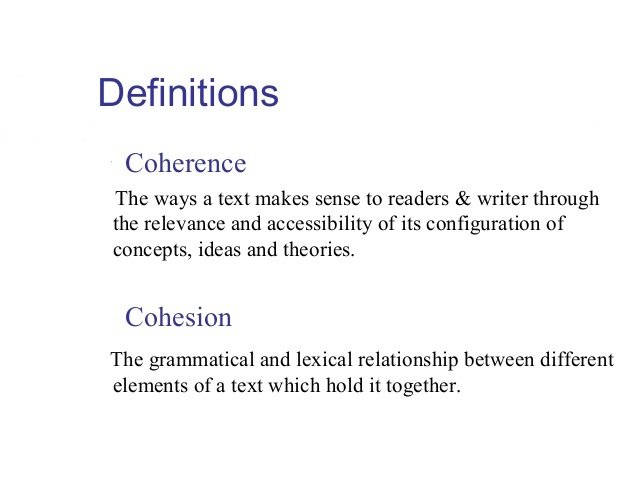Cohesion
Cohesion is the grammatical and lexical linking within a text or sentence that holds a text together and gives it meaning.
From a language point of view a text uses certain conventions that help to make a text cohesive.
The topic of the text enables the writer to select from a lexical set of related words.
We can also use grammatical features to allow the reader to comprehend what is being referred to throughout the text. Let’s look at these in a little more details.
We can repeat key content words throughout the piece of writing. This helps the reader know who or what is being referred to.
Writers also use similar related words that form part of a lexical chain. An example of this is when describing a festival, the writer may use words such as celebration, party and festivity, or fancy dress, costumes and masks. Reference words (such as it, they or them) also may be part of a lexical chain.
A good writer tends to use the same tense to hold the text together. This helps to make the text more comprehensible for the reader, rather than jumping from one tense to another.
Writers use linking words to allow the reader to predict the information that is coming also helps the reader. These might be related to time; e.g. ‘an hour later’ or sequence; e.g. ‘before that’.
Words are sometimes left out because the meaning is clear from a previous sentence or clause. This is called ellipsis. For example, “I love horror movies!” might get an answer “I don’t.” which is short for “I don’t like horror movies.”

Coherence
From a communicative point of view however, we need to examine the overall communicative aspect of a piece of writing. This involves other skills which relate to the overall organization and message of the text.
A written text usually has some kind of logic or coherence which allows the reader to follow the intended message. This may reflect the writer’s reason for writing or their line of thought. If a written text lacks these features it may cause a strain on the reader.
Writing also involves knowledge of the genre of texts (writing in such a way that is typical of the style, construction and choice of language, for example: email writing).
When we understand the audience and purpose of the text we are writing we can use the conventions of genre to make it easy to read.
The final consideration for a writer is the register or the actual language we use with a particular group of people. For example, when writing an academic essay, we use formal language related to the topic and assume it is shared by the intended recipients.

